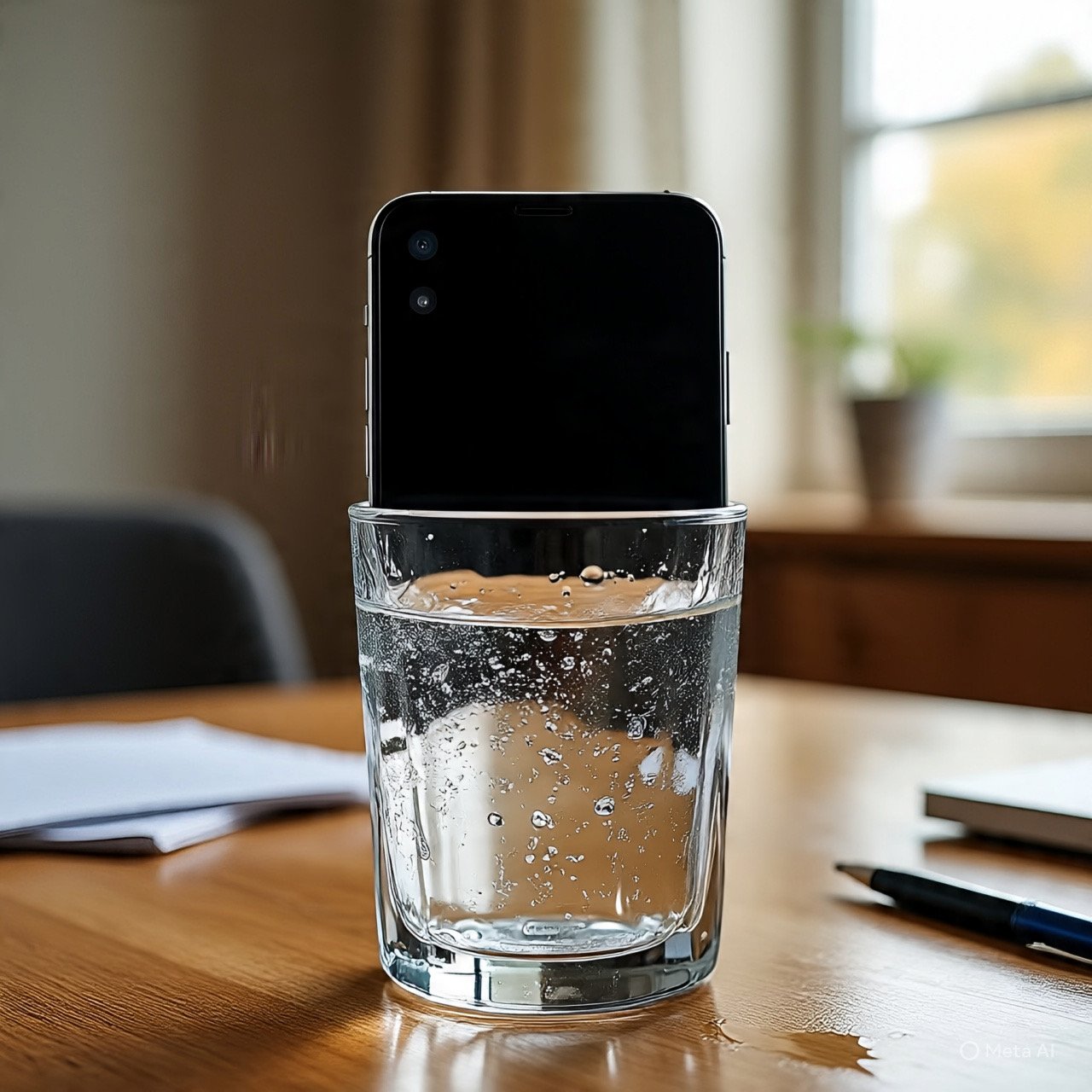The iPhone 15 Pro Max is a marvel of modern engineering, boasting a sleek titanium frame, a powerful camera system, and impressive durability features. One of its standout qualities is its water resistance, which gives users peace of mind during unexpected spills or rainy days. But how long can the iPhone 15 Pro Max survive underwater, how deep can it go, and is it a good idea to test its limits? In this article, we’ll dive into the details of its water resistance capabilities, explain what the ratings mean, and offer practical advice on whether you should put it to the test—all in a way that’s easy to understand and engaging.
What Makes the iPhone 15 Pro Max Water Resistant?
Before we get to the specifics, let’s clarify what “water resistant” means. Unlike “waterproof,” which implies complete immunity to water, “water resistant” means the device can withstand water exposure under certain conditions. The iPhone 15 Pro Max, like the rest of the iPhone 15 series, carries an IP68 rating under the International Electrotechnical Commission (IEC) standard 60529. This rating is the gold standard for flagship smartphones, indicating top-tier protection against dust and water.
The “IP” stands for Ingress Protection, and the two digits break down as follows:
- 6: The highest level of dust resistance, meaning the phone is completely sealed against dust and small particles.
- 8: A high level of water resistance, allowing submersion in water under specific conditions defined by the manufacturer.
For the iPhone 15 Pro Max, Apple specifies that it can handle submersion in fresh water up to a depth of 6 meters (about 19.7 feet) for up to 30 minutes. This makes it well-suited for accidental water exposure, but there are important nuances to understand before you start treating it like a dive camera.
How Long Can the iPhone 15 Pro Max Survive in Water?
According to Apple’s official specifications, the iPhone 15 Pro Max can remain submerged in fresh water for up to 30 minutes without sustaining damage, provided it stays within the 6-meter depth limit. This duration is tested in controlled laboratory conditions, where the water is clean, still, and at a neutral temperature. In real-world scenarios, factors like water movement, temperature, or impurities can affect the outcome.
The 30-minute limit is a maximum, not a recommendation. Apple doesn’t encourage intentional submersion, and prolonged exposure—even within the rated time—can increase the risk of water seeping into the device, especially if the seals are compromised due to wear or damage. Think of this rating as a safety net for accidents, not a green light for underwater adventures.
How Deep Can It Go?
The iPhone 15 Pro Max is rated to withstand water up to 6 meters deep (roughly 19.7 feet). This is a significant improvement over earlier iPhone models, like the iPhone 7, which had an IP67 rating for just 1 meter of depth. The 6-meter rating means the phone can theoretically survive being dropped into a pool, a shallow lake, or even a toilet (we’ve all been there). However, this depth is also tested under ideal lab conditions, so real-world performance may vary.
It’s critical to note that the IP68 rating applies only to fresh water. Salt water (like in oceans or seas), chlorinated pool water, or other liquids (soda, coffee, etc.) can corrode the phone’s seals and internal components, leading to damage even within the rated depth and time. If your phone gets wet with anything other than fresh water, rinse it gently with tap water (while powered off) and dry it thoroughly to minimize harm.
Should You Test the Water Resistance of Your iPhone 15 Pro Max?
The short answer: No, you shouldn’t intentionally test the water resistance of your iPhone 15 Pro Max. Here’s why, along with some practical considerations to keep your device safe.
Why You Shouldn’t Test It
- Risk of Damage: The IP68 rating is based on lab tests with brand-new, undamaged devices. Normal wear and tear—drops, scratches, or even minor dents—can weaken the seals that keep water out. Testing the limits of your phone could lead to water ingress, especially if it’s been used for a while.
- No Warranty for Water Damage: Apple’s standard warranty does not cover liquid damage, even if the phone is within its IP68 rating. If water gets inside and causes issues, you’ll likely face costly repairs or a replacement, unless you have AppleCare+ with coverage for accidental damage (and even then, there’s a service fee).
- Real-World vs. Lab Conditions: The lab tests use controlled settings with still, fresh water. Real-world scenarios—like waves in a pool, pressure from a shower, or sand in a beach setting—can exceed the phone’s rated capabilities. Salt water, in particular, is notorious for corroding electronics over time.
- Degradation Over Time: Water resistance isn’t permanent. The adhesives and seals that protect your iPhone can degrade with age, heat, or physical stress, reducing its ability to keep water out. A phone that’s six months old may not perform as well as one fresh out of the box.
- Unnecessary Risk: Your iPhone 15 Pro Max is an expensive investment. Why risk damaging it just to confirm a feature that’s already been rigorously tested by Apple? The IP68 rating is there to protect against accidents, not to encourage underwater experiments.
When It’s Okay to Rely on Water Resistance
The iPhone 15 Pro Max’s water resistance is designed for accidental exposure, such as:
- Getting caught in the rain while using your phone.
- Dropping it in a puddle or shallow pool and retrieving it quickly.
- Spilling a drink on it and drying it off promptly.
- Taking it near water for quick photos (e.g., at a pool party) without submerging it.
For example, if you accidentally drop your phone in a sink or it gets splashed at the beach, the IP68 rating gives you confidence that it’s likely to survive, as long as you act quickly to dry it. Apple even notes that the phone can handle common liquids like soda or coffee, but you should rinse and dry it immediately after such spills.
If You Want to Use It Underwater
If you’re tempted to take underwater photos or videos with your iPhone 15 Pro Max (its camera is amazing, after all), consider these precautions instead of testing it bare:
- Use a Waterproof Case: Invest in a high-quality waterproof case, like the OtterBox Frē Series, which has its own IP68 rating and can handle submersion for longer periods (e.g., 2 meters for 1 hour). These cases add an extra layer of protection, especially for activities like snorkeling or pool photography.
- Get a Waterproof Pouch: For added safety, a waterproof pouch can seal your phone completely, allowing you to take it underwater without relying solely on its built-in resistance.
- Stay Within Limits: If you must use the phone without a case, stick to shallow water (less than 6 meters) and keep submersion brief (well under 30 minutes). Avoid high-pressure water, like jets or waves.
- Dry Thoroughly After Use: If your phone gets wet, gently tap it with the charging port facing down to remove excess water, then let it air-dry in a well-ventilated area for at least 30 minutes. Avoid charging it until it’s completely dry to prevent damage.
What to Do If Your iPhone 15 Pro Max Gets Wet
Accidents happen, and if your iPhone 15 Pro Max gets wet, follow these steps to minimize damage:
- Turn It Off: If it’s still on, power it down immediately to prevent short circuits.
- Remove Any Case and Accessories: Take off any case, SIM tray, or connected cables.
- Dry the Exterior: Wipe it with a soft, lint-free cloth (like a lens cloth).
- Remove Liquid from Ports: Gently tap the phone with the USB-C connector facing down to dislodge water. Place it in front of a fan blowing cool air to help dry the port.
- Air Dry: Leave it in a dry, airy space for at least 30 minutes, or longer for deeper submersion. Avoid heat sources like hairdryers or ovens, as they can damage the phone.
- Avoid Rice: Contrary to popular belief, rice isn’t effective and can leave particles in the ports. Air drying is the best method.
- Check for Liquid Detection: If you see a “Liquid Detected in USB-C Connector” alert when charging, continue drying until the alert disappears.
If the phone doesn’t work after drying or shows signs of damage (e.g., foggy camera, no sound), contact Apple Support or visit an Apple Store. Be honest about the water exposure, as technicians can detect liquid damage. If you have AppleCare+, it may cover repairs for a fee; otherwise, you’ll pay out-of-pocket.
Tips to Maintain Water Resistance
To keep your iPhone 15 Pro Max’s water resistance intact over time:
- Use a Protective Case: A case can shield the phone from drops that might compromise seals.
- Avoid Extreme Conditions: Keep it away from saunas, steam rooms, or hot tubs, as heat and steam can weaken seals.
- Inspect Regularly: Check for cracks, scratches, or loose ports that could reduce water resistance.
- Avoid High-Velocity Water: Don’t expose it to showers, water sports, or pressure washers, which can force water past the seals.
- Clean Carefully: If it’s exposed to salt water or other liquids, rinse with fresh water (while off) and dry thoroughly.
Final Thoughts: Trust, But Don’t Test
The iPhone 15 Pro Max’s IP68 rating—6 meters for up to 30 minutes in fresh water—makes it one of the most water-resistant smartphones available. It’s built to handle life’s unexpected splashes, from a spilled coffee to a quick dunk in a pool. However, it’s not a submarine, and intentional water tests are a gamble you don’t need to take. Apple’s engineers have already pushed the device to its limits in the lab, so you can trust the rating without risking your pricey gadget.
Instead of testing its water resistance, treat it as a safety feature for accidents. If you’re eager to capture underwater shots, grab a waterproof case or pouch to play it safe. By following the care tips above, you’ll keep your iPhone 15 Pro Max in top shape, ready to weather any storm—or spill—that comes its way. Enjoy your phone’s durability, but let it shine on dry land where it belongs.


